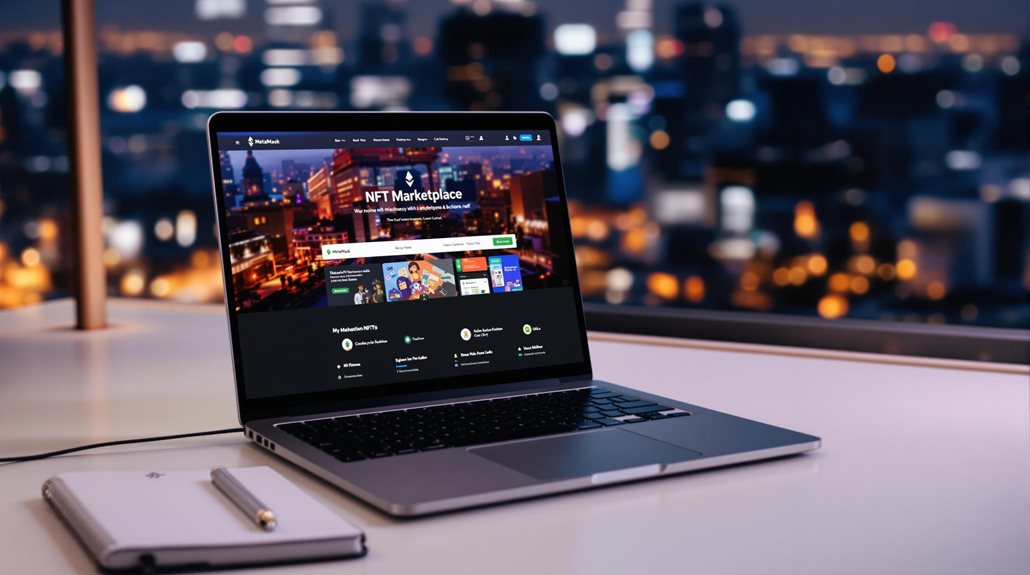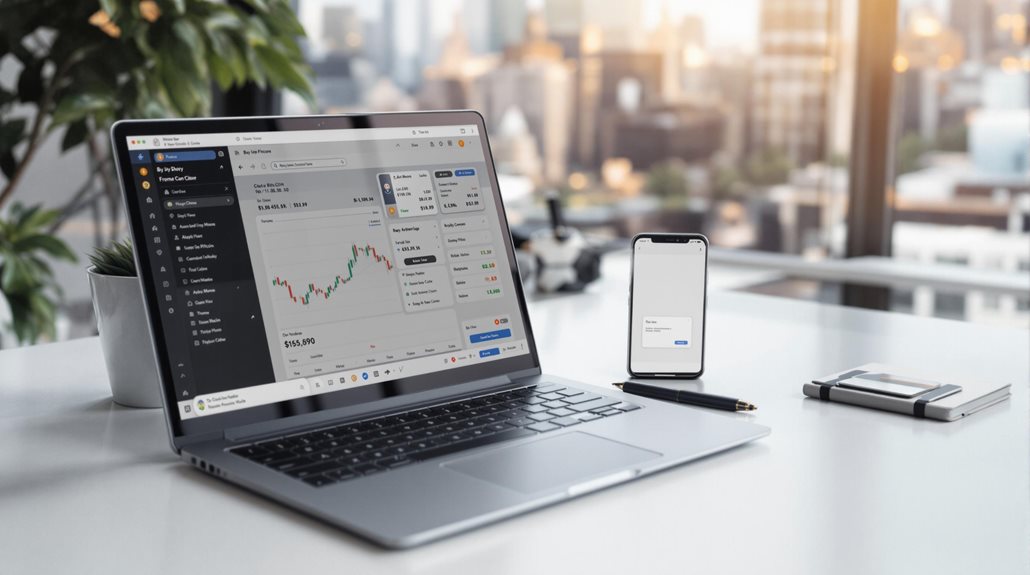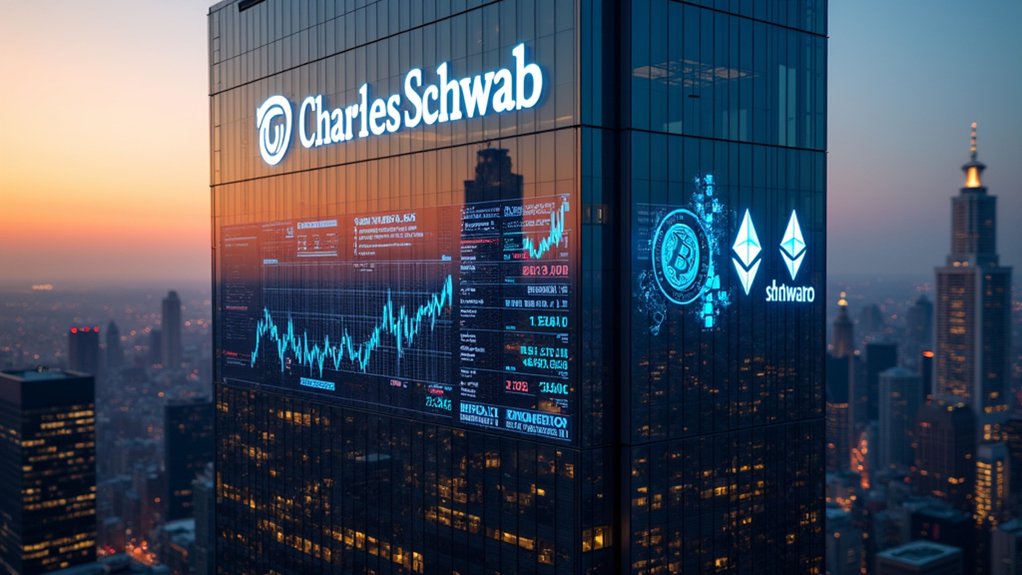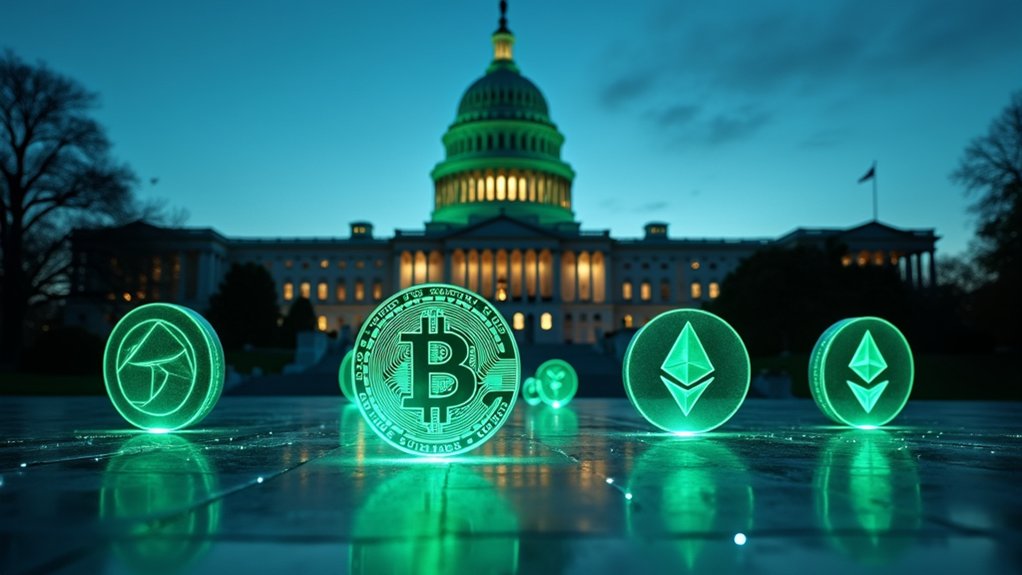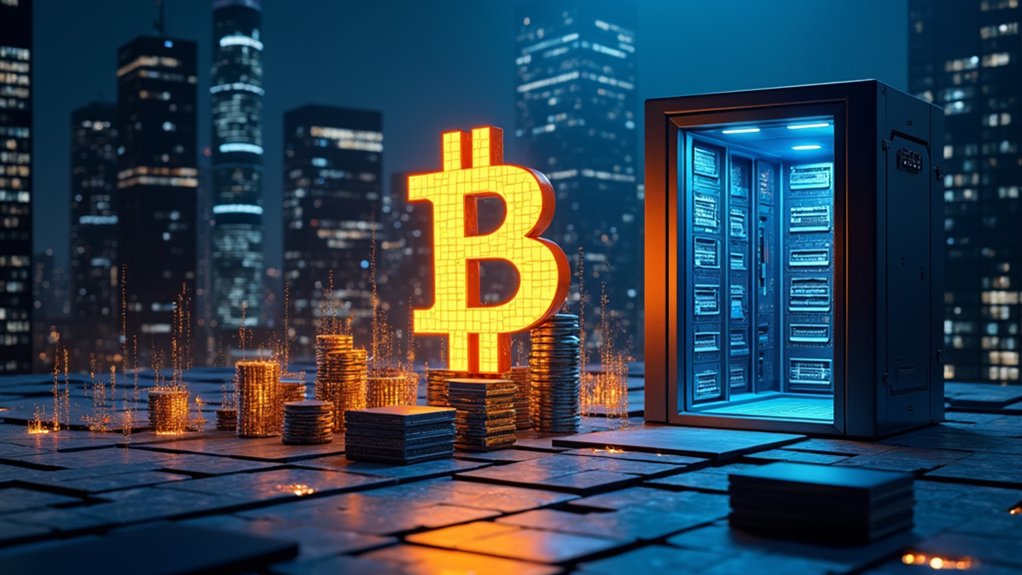Buying an NFT starts with choosing a marketplace like OpenSea or Binance NFT. A digital wallet, such as MetaMask, is needed to store cryptocurrency and NFTs. After setting up the wallet with security measures, it's funded with cryptocurrency from an exchange. The wallet then connects to the marketplace, allowing users to browse and purchase NFTs through fixed-price sales or auctions. Understanding gas fees and blockchain basics helps make informed purchase decisions.

The wild world of NFTs may seem intimidating at first, but buying them follows a straightforward process. People interested in purchasing NFTs need to start by selecting a marketplace where they'll make their purchase. Several popular options exist in the market today.
OpenSea stands as the largest NFT marketplace and supports multiple blockchain networks. Blur leads in Ethereum-based trading volume, while Magic Eden focuses on Solana NFTs. Binance NFT offers competitive fees at 1% per transaction and hosts over 2.5 million NFTs. Nifty Gateway specializes in high-profile artist collections. These platforms focus on multiple blockchains including Ethereum, Solana, and Bitcoin. Traditional auction houses like Christie's and Sotheby's have also entered the NFT market.
Before making any purchases, buyers must set up a cryptocurrency wallet. This involves installing a wallet as either a browser extension or mobile app. During setup, users create an account protected by a password and receive a recovery phrase. Adding two-factor authentication provides an extra layer of security.
To use the wallet, buyers need to purchase cryptocurrency from an exchange and transfer it to their wallet using their unique deposit address. The minting process ensures each NFT remains unique and irreplaceable on the blockchain.
Once the wallet contains funds, the next step involves connecting it to the chosen NFT marketplace. Users visit the marketplace website and click on the login or profile icon to select their wallet provider. The wallet interface will prompt them to approve the connection. It's important to maintain sufficient cryptocurrency balance for potential purchases.
Each marketplace has its own interface and features that users can explore.
The actual purchase process begins with browsing NFT collections. Marketplaces typically offer filters and categories to help narrow down options. Before buying, users can review important details about each NFT, including its price and ownership history.
Fixed-price NFTs can be purchased immediately using the "Buy Now" option, while others might require placing bids in an auction format. Each transaction includes gas fees, which cover the cost of processing the transaction on the blockchain.
When ready to buy, users approve the transaction through their connected wallet. After confirmation, the NFT automatically transfers to the buyer's wallet. The process completes the ownership transfer, and the NFT becomes part of the buyer's digital collection, recorded permanently on the blockchain.
Frequently Asked Questions
Can I Create and Sell My Own NFTS Without Technical Knowledge?
Anyone can create and sell NFTs without coding knowledge using no-code platforms like OpenSea, Rarible, or Mintable.
It's as simple as connecting a crypto wallet, uploading digital artwork, and setting the NFT's details. These platforms handle the technical aspects of minting and listing NFTs for sale.
Creators can set prices, auction formats, and royalty percentages. They'll need to promote their NFTs and engage with potential buyers to make sales.
What Happens to My NFT if the Platform I Bought It From Shuts Down?
If a platform shuts down, the NFT itself isn't lost. It's still safe on the blockchain, like a digital record that can't be erased.
The owner keeps their NFT as long as they have their wallet keys. However, they won't be able to buy, sell, or display the NFT on that specific platform anymore.
They can still move their NFT to other marketplaces that support the same blockchain.
Are NFT Transactions Reversible if I Make a Mistake During Purchase?
NFT transactions aren't reversible once they're confirmed on the blockchain.
It's like permanent digital ink – what's done is done.
When someone makes a mistake during purchase, like entering the wrong amount or sending to the wrong address, there's no built-in way to undo it.
That's just how blockchain technology works.
Some researchers are exploring new token standards that could add reversibility features, but right now, NFT transactions remain one-way streets.
Why Do Some NFTS Sell for Millions While Others Seem Worthless?
NFT prices vary dramatically based on several key factors.
Some NFTs sell for millions because they're extremely rare, like CryptoPunks with unique traits, or they're created by famous artists like Beeple.
The artist's reputation, an NFT's scarcity, and its utility (like access to exclusive events) all affect its value.
Market trends and collector demand also play a big role – when crypto markets are hot, NFT prices often rise too.
Can I Lose My NFT if I Forget My Wallet Password?
NFTs remain on the blockchain even if someone forgets their wallet password, but they can't be accessed without it.
It's like having money in a safe but losing the combination – the assets are still there but can't be reached.
While the NFTs aren't technically "lost," they become unusable without wallet access.
There are some recovery options, like using a seed phrase, but without any recovery method, the NFTs could become permanently inaccessible.
